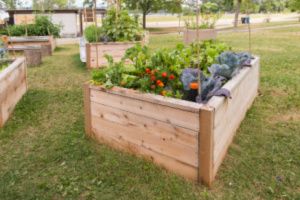Unlocking the Secrets of Fill Dirt: Top 5 Home and Yard Projects You Can Tackle Today!
Want to improve your outdoor space quickly and affordably? These top fill dirt projects for your yard highlight some of the best uses for fill dirt in residential landscaping. Fill dirt is a strong, stable material that can help you level uneven ground, improve drainage, or build up your landscape. Whether you want to build garden beds, install a shed, or reshape your yard, fill dirt is the key to getting the job done right. Let’s explore five of the best ways to use fill dirt to transform your outdoor space today.
Understanding Fill Dirt: What It Is and Why It Matters
Fill dirt is subsoil taken from beneath the topsoil layer. It contains no organic material and doesn’t break down over time. It’s made of clay, sand, and crushed rock. This mix gives it strength and stability, perfect for building and leveling projects. Because it lacks nutrients, fill dirt is ideal for structural work—not growing plants. That’s what topsoil is for. It resists erosion, compacts well, and gives a strong base for patios, retaining walls, and sheds.
The Benefits of Using Fill Dirt in Your Home and Yard Projects
Fill dirt offers many benefits. It helps you grade your yard and improve water drainage. It reduces pooling and erosion. It’s cost-effective. Compared to topsoil and gravel, fill dirt is cheaper and great for bulk use in large areas. Fill dirt is versatile. Use it to level yards, backfill around foundations, or prep for new landscaping features.
Project 1: Leveling Your Yard for Better Drainage
Low spots in your yard collect water. Fill dirt helps raise those areas and guides water away from your home. To start, mark low areas where water collects. Then bring in fill dirt and spread it with a shovel or track loader. Compact the dirt in layers to avoid settling later. Add topsoil and reseed if needed for a finished look.
Project 2: Creating a Raised Garden Bed with Fill Dirt
Raised garden beds are one of the best uses for fill dirt, making planting easier and more attractive. Use fill dirt as the base layer to save on topsoil. Pick a sunny spot with good drainage. Outline your bed and dig a shallow trench for water control. Fill the base with compacted fill dirt. Add topsoil or compost on top for plant growth. This method saves money and gives lasting structure to your bed.
Project 3: Building a Retaining Wall: A Step-by-Step Guide
Retaining walls control slopes and prevent erosion. Fill dirt supports both the base and the back of your wall. Start by marking your wall line. Dig a trench at least 6 inches deep and wide enough for your block base. Fill the trench with gravel. Lay your blocks and check each one for level. Backfill behind each row with fill dirt. Compact the dirt to reduce pressure and improve wall strength. Cap it off with finished blocks.
Project 4: Enhancing Your Landscape with Fill Dirt
Some of the best uses for fill dirt include creating berms, flower beds, and other visual features in your yard. Fill dirt shapes the land and holds form over time, making it ideal for landscaping. For berms, outline the shape and start piling fill dirt in layers. Compact each layer before adding more. Top the berm with topsoil, then plant shrubs or flowers. Berms also help with drainage and improve backyard privacy.
Project 5: Preparing Your Foundation for a New Shed
A shed needs a level, compact base. Fill dirt is the ideal material to shape and support your shed foundation. Clear and mark your shed area. Dig 6 inches deep to prepare the space. Add fill dirt in layers and compact it firmly. Top it with gravel and install your shed frame on top. This solid base prevents sinking, shifting, and water damage.
Tips for Choosing the Right Fill Dirt for Your Projects
Good fill dirt is clean and screened. It should not contain trash, roots, or construction debris. For the best uses for fill dirt, always ask your supplier for a mix that includes clay and sand—this ensures strength and easy compaction. Be clear about your project goals so they can match the right material to your needs. Always inspect the fill dirt before delivery to avoid setbacks.
Safety Precautions When Working with Fill Dirt
Use gloves, boots, and eye protection when handling dirt. A dust mask helps if the soil is dry or loose. Use proper lifting technique—lift with your legs, not your back. Take breaks and stay hydrated. Use tools like wheelbarrows and compactors. This reduces strain and speeds up the job. Work on stable ground and watch for slopes or drop-offs.
Conclusion: Transforming Your Space with Fill Dirt
Fill dirt is a powerful, affordable tool for any homeowner. It helps with drainage, landscaping, and structural prep work. Projects like garden beds, retaining walls, and yard leveling are easier with this material. You don’t need to break the bank to improve your yard. Just use fill dirt smartly and safely. Looking for top-value fill dirt, tools, and supplies?
Visit DirtConnectionsStore.com for helpful products. Check out our projects on Dirt Connections YouTube. Transform your yard today with Dirt Connections.
Summary

Dirt Connections was started with one goal in mind: providing quality residential and commercial construction services to clients on time and on budget. Reach out for more information on how we can support your next project.
For your convenience our estimates are free and by appointment. Call 703-940-9949 for a free estimate today!









































